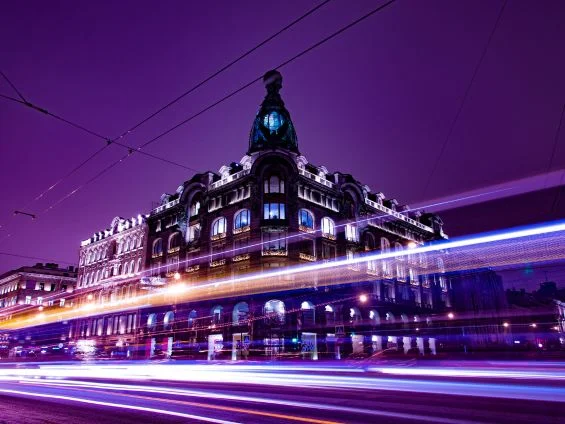Lighting in building construction is a crucial aspect in creating functional, safe, and aesthetically pleasing spaces. Whether indoors or outdoors, proper lighting can influence people’s mood, enhance visibility, and highlight architectural details.
In this article, you will find fundamental tips and guidelines to understand the importance of proper lighting in constructed spaces. Discover how lighting can transform environments, enhance functionality, and accentuate architectural beauty.
Don’t miss the opportunity to explore the secrets of lighting and its impact on building construction!
Table of Content
- Introduction to the topic: Lighting and Building
- Lighting in Building: Guidelines to Follow
- Illuminating a Building Site with LED Lighting
- Benefits of LED Lighting in Building Construction:
- Applications of LED Lighting in Building Construction:
- Let us help you light up your building site with LEDs
- Aspects to Consider in Building Lighting
- Summary
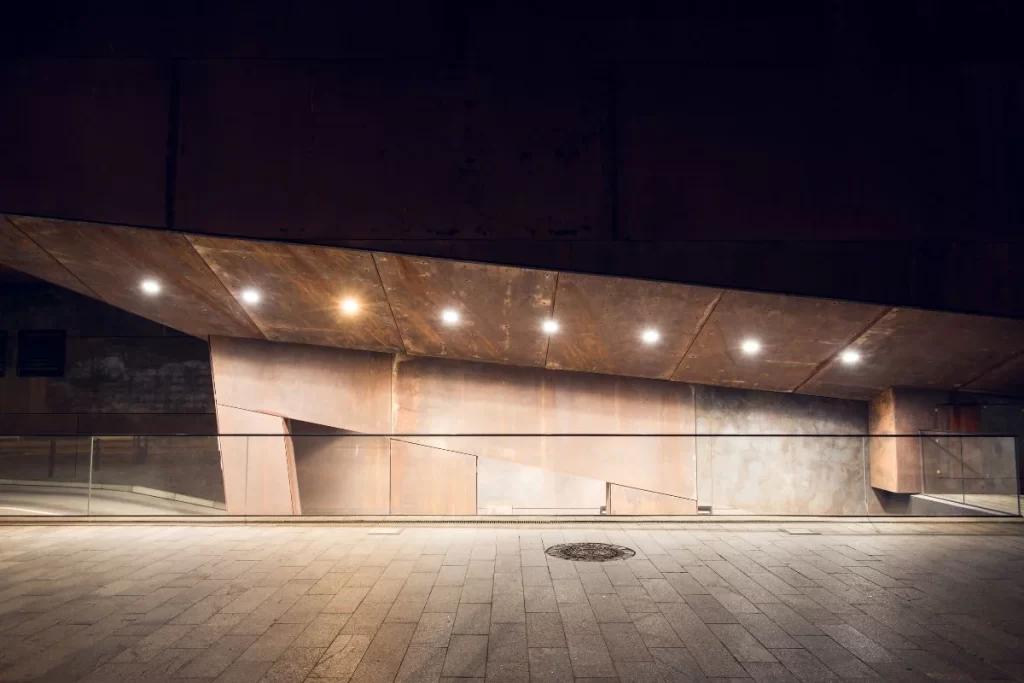
Introduction to the topic: Lighting and Building
Various types of lighting in buildings are explored, such as general, punctual and accent. The relevance of taking advantage of natural light and adopting efficient technologies to reduce energy consumption is highlighted.
General Lighting
There are different types of lighting used in building constructions. General or ambient lighting provides uniform and gentle illumination throughout the space, ensuring adequate visibility.
It is achieved through ceiling lights, wall lamps, or integrated lighting in architectural design.
Spot Lighting
Spot or focused lighting is used to highlight specific elements such as artwork, decorative objects, or architectural features. Table lamps, directional spotlights, or projectors are used to achieve this type of lighting.
Additionally, accent lighting is used to create visual effects and highlight specific areas within a space.
Recessed lights, LED strips, or pendant lights are employed to accentuate architectural elements like columns or high ceilings.
Natural Lighting
Natural lighting also plays a significant role in building construction. Maximizing natural light can reduce the need for artificial lighting during the day and create a more pleasant environment.
Strategic design of windows and skylights is crucial for achieving this.
Energy Efficiency
Regarding energy efficiency, it is essential to use efficient lighting technologies and systems, such as LED bulbs or automatic lighting controls. These measures can reduce energy consumption and associated costs.
At Pleus, we are delighted to offer our expertise and knowledge in the fascinating field of lighting in building construction. If you are seeking clear and precise guidelines to achieve optimal lighting in your construction project, you’ve come to the right place. Our highly trained professionals will provide personalized guidance and support at every step of the way.
From choosing luminaires to light distribution, we will ensure that every detail is carefully considered. Do not hesitate to contact us to discuss your needs and discover how we can help you create functional and aesthetically pleasing spaces through well-planned lighting in your building. We look forward to collaborating with you at Pleus!
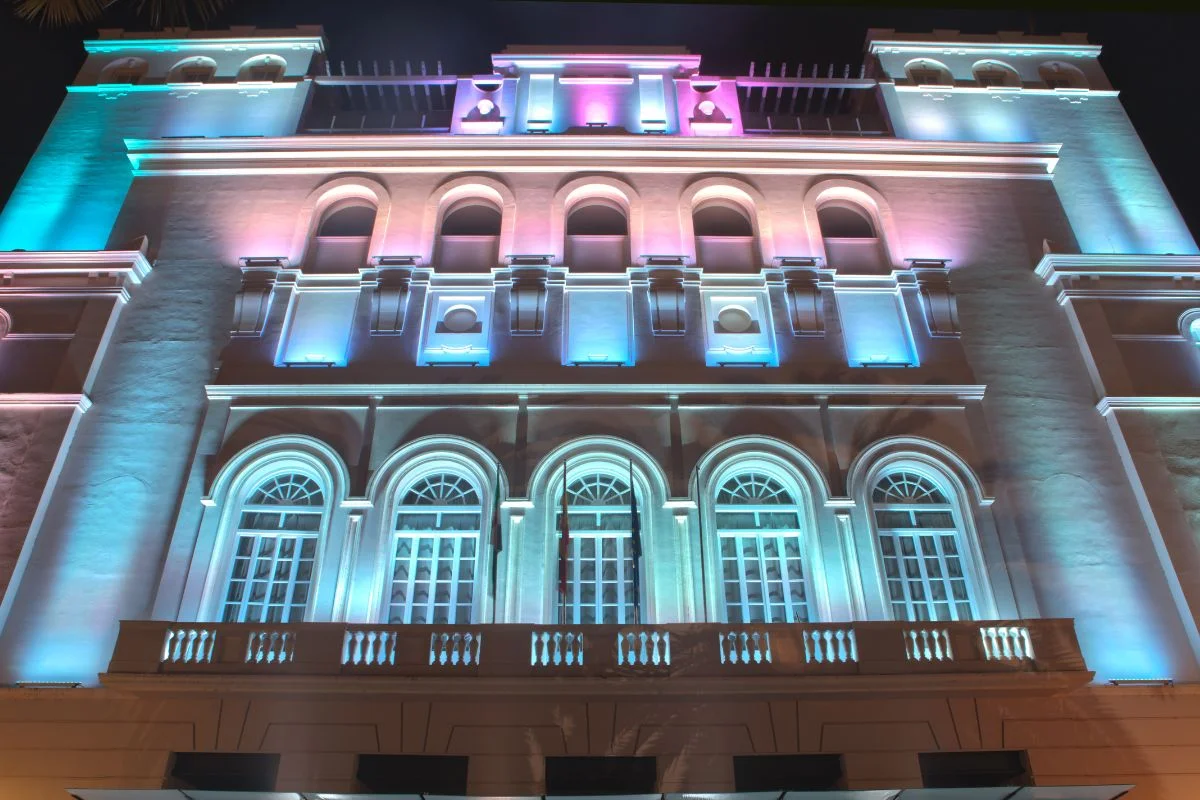
Lighting in Building: Guidelines to Follow
Appropriate lighting is essential for an accessible environment. Besides determining the light intensity (specified in mandatory regulations), special attention must be paid to the reflections they produce.
These reflections can include:
- Direct: Caused by light falling directly into the user’s eyes.
- Indirect or reflective: Produced by reflecting light from a bright surface. This can happen with polished or shiny surfaces for floors and walls.
- Disability or dimming: Produces scattered light that reduces contrast and hinders visibility. Glare effects can also be limited by considering factors like the brightness of the light source, the size of the source, its location, contrast of luminance, and time of exposure.
- Light source brightness: The higher the brightness, the greater the glare. Font size: Large fonts with low brightness are just as annoying as small fonts with a lot of brightness.
- Source Location: We need to get it out of sight. Luminance contrast: the contrast between a light source and its surroundings is directly proportional to the glare it produces.
- Time: The longer the exposure time, the greater the glare. proper lighting
What to avoid in building lighting:
- Lighting should be constant and uniform, avoiding drastic changes when moving from one room to another.
- Avoid abrupt lighting changes when moving from vertical communication areas (stairs, elevator lobbies, etc.) to other floor areas. If necessary, enhance lighting in these areas to reduce contrast.
- Design elements that cause glare, like windows at the end of hallways or fixtures visible from the user’s perspective, should be corrected with filtering elements (blinds, shades, etc.) on windows and screens on fixtures.
- Care must be taken not to over-illuminate corridors and reception areas, especially for nighttime events, as this can create a strong contrast with exterior lighting. Interior light intensity should match exterior lighting, with greater intensity during the day and reduced intensity at night.
Timers controlling lighting in specific areas (restrooms, hallways, stairs, etc.) should be correctly configured so users don’t end up in the dark during their activities. Restrooms with dark spaces should not use timed lighting systems that can’t be controlled from inside the cubicle.
Illuminating a Building Site with LED Lighting
Lighting plays a crucial role on any construction site, providing safety, efficiency, and visibility throughout the process.
LED lighting offers numerous advantages over traditional light sources, and we’ll show you why you should consider its implementation. Join us as we explore the benefits and applications of LED lighting in the construction environment.
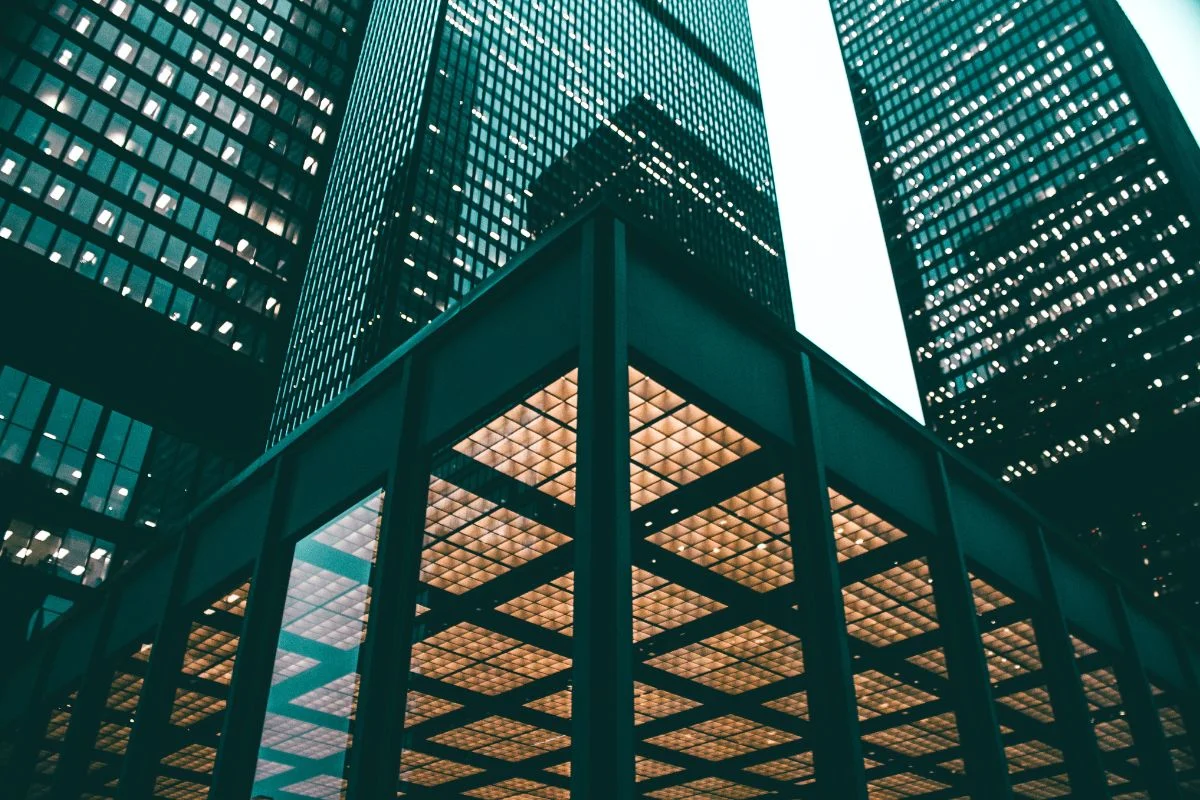
Benefits of LED Lighting in Building Construction:
LED lighting has revolutionized the way we light spaces, and the construction industry is no exception. Here are some of the most notable benefits of using LED lighting on your construction site:
1. Energy Efficiency
Energy efficiency is a key aspect in any construction project. LED luminaires consume significantly less energy compared to conventional lighting technologies.
This translates to substantial energy cost savings in the long run, which benefits both the environment and your budget.
2. Long Lifespan
LED bulbs have a much longer lifespan compared to traditional lamps, reducing maintenance costs and minimizing disruptions on the construction site.
3. High-Quality Light
LED lighting provides superior light quality compared to conventional light sources. It offers bright, even lighting, improving visibility on the construction site and helping prevent accidents.
In addition, the LED lights do not emit annoying flicker, which reduces eye fatigue and improves worker comfort.
4. Durability
LED luminaires are designed to withstand harsh conditions, such as vibrations, shocks, and impacts. This makes them an ideal choice for construction environments where strength and durability are essential.
Even under extreme conditions, LED lights maintain their performance and reliability, ensuring continuous, trouble-free operation.
Applications of LED Lighting in Building Construction:
LED lighting is widely used in various applications within the built environment. Here are some of the key areas where LED lighting makes a difference:
Lighting of work areas
Work zones on a construction site require optimal lighting to ensure safety and productivity. LED lights can effectively illuminate large areas, providing bright, even lighting. This allows workers to carry out their tasks with precision and reduces the risk of accidents.
Let us help you light up your building site with LEDs
At Pleus, we are experts in LED lighting and fully equipped to illuminate your construction site with LED.
When you need lighting for a building site, you don’t need to look any further. We invite you to contact us for specialized solutions tailored to your needs.
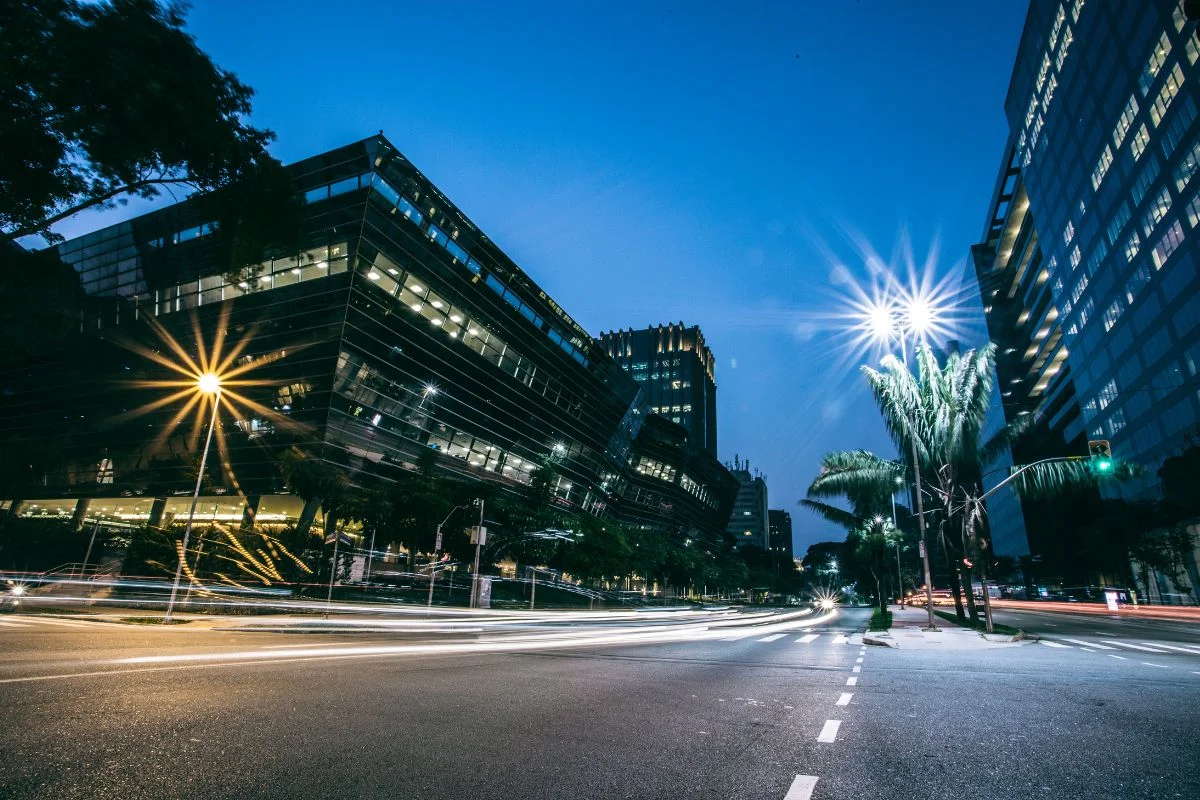
Aspects to Consider in Building Lighting
Lighting in building construction is a fundamental aspect in creating pleasant and functional spaces. It involves the design and implementation of artificial and natural lighting systems in buildings, aiming to provide the appropriate amount of light in different areas and times of the day.
Various factors should be considered when designing the lighting system in a building. These include the intended use of the space, the visual needs of occupants, energy efficiency, aesthetics, and compliance with safety codes and standards.
Artificial lighting uses different types of luminaires, such as incandescent, fluorescent, LED, and halogen lamps, which can vary in terms of energy efficiency, color temperature, and lifespan.
The choice of luminaires will depend on the purpose of the space, the desired ambiance, and specific lighting requirements.
Natural lighting is another essential aspect in building construction. Integrating natural light can reduce the reliance on artificial lighting during the day, provide a visual connection with the exterior environment, and enhance occupants’ well-being.
Strategic architectural design, such as window and skylight placement and the appropriate selection of transparent materials, is vital to maximize natural light without sacrificing energy efficiency or thermal comfort.
In recent years, there has been an increasing focus on energy efficiency in building lighting. LED technology has gained popularity due to its higher efficiency and durability compared to traditional lamps.
Additionally, smart control systems have been developed to regulate light intensity and adapt to changing needs, promoting more efficient energy use.
Summary
In summary, lighting in the building is an essential element to create pleasant, functional and efficient spaces. Both artificial and natural lighting must be carefully considered during the design and construction process of a building, taking into account occupant requirements, aesthetics, energy efficiency, and safety standards.
Lighting in the building is a key element that can affect both the functionality and the aesthetics of a space. By combining different types of lighting and using efficient technologies, an adequately lit, attractive and sustainable environment can be achieved.
At Pleus, we understand the importance of quality lighting in buildings. Our team of highly trained professionals is ready to provide you with personalized advice and make a budget adapted to your needs.
Do not hesitate to contact us and discover how we can help you achieve the perfect lighting for your project. We are excited to collaborate with you on Pleus!

